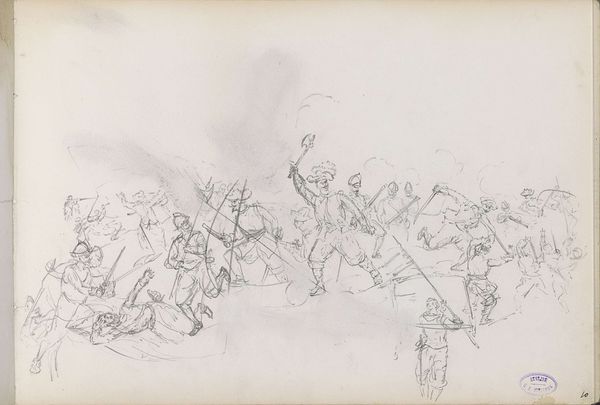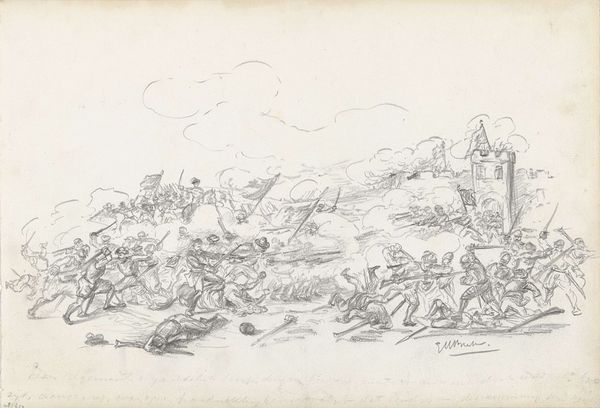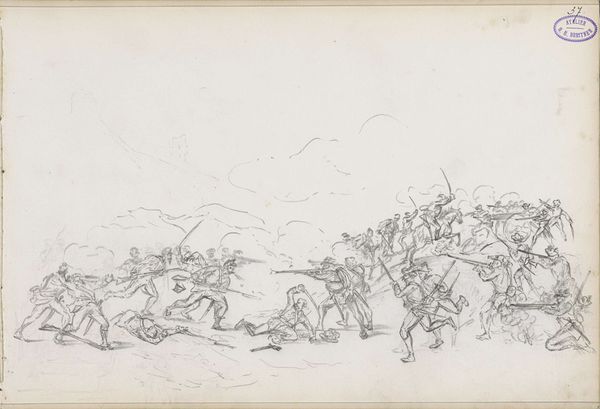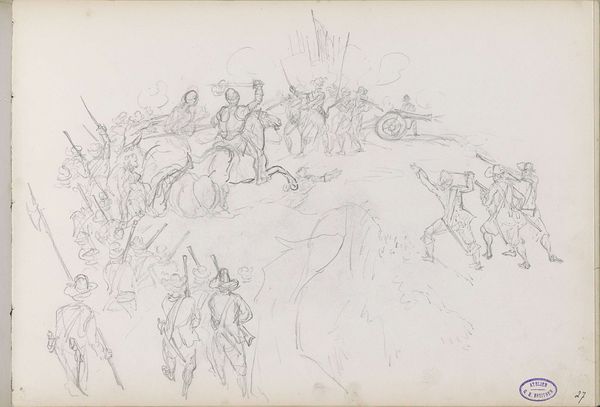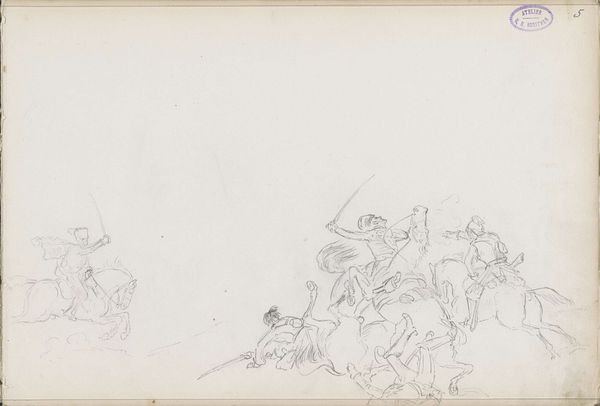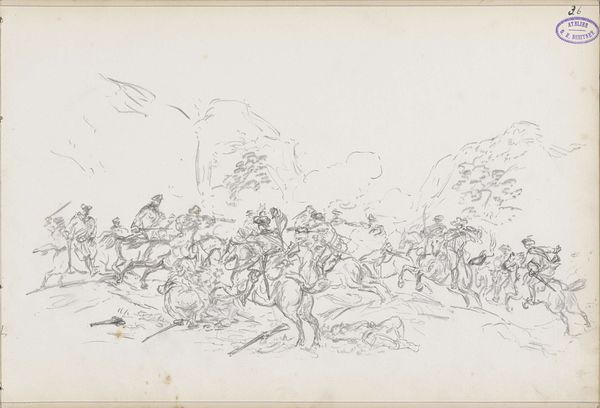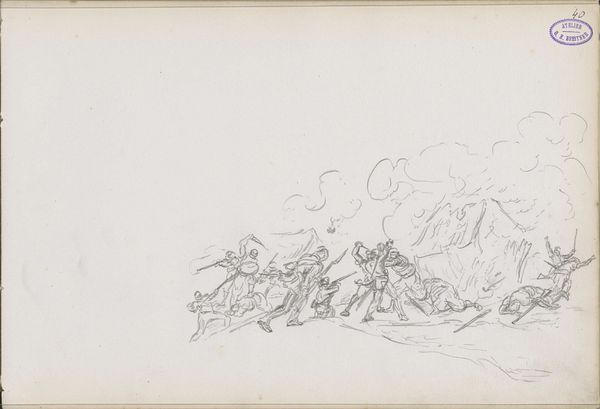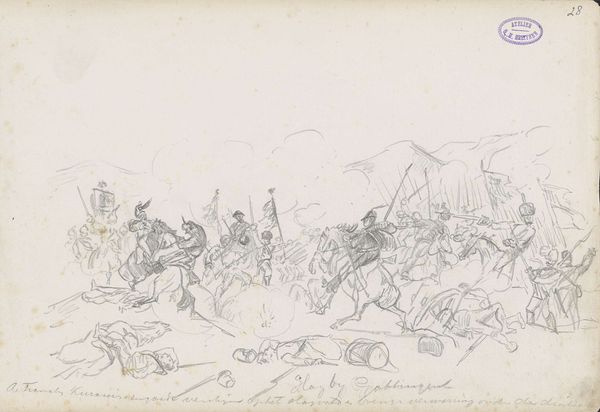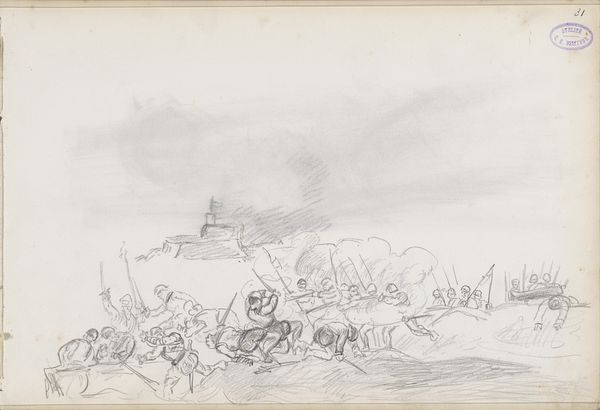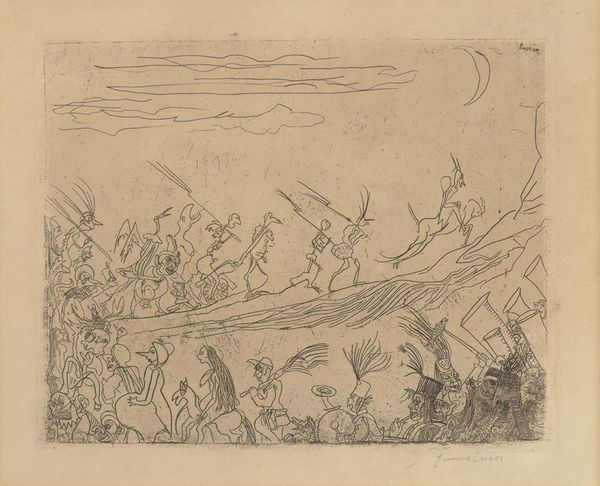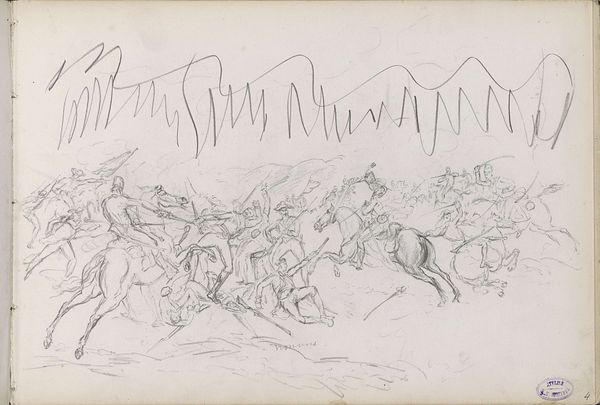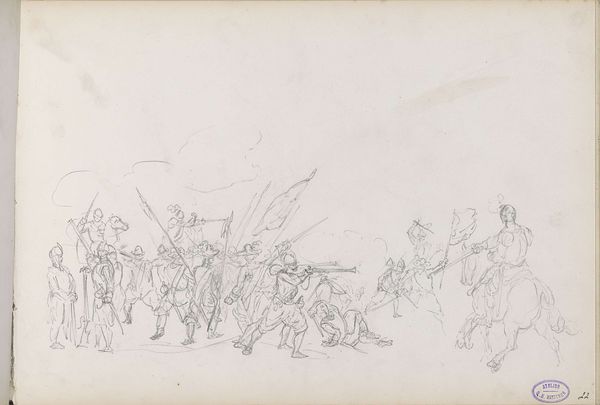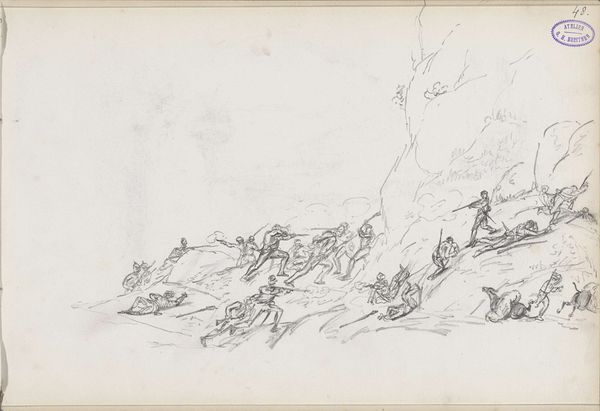
Dimensions: height 212 mm, width 307 mm
Copyright: Rijks Museum: Open Domain
Editor: This pencil drawing, "Fight between Robbers and Soldiers" by George Hendrik Breitner, dates to 1872. It’s quite a chaotic scene, very dynamic but difficult to decipher at first glance. All the figures seem locked in this deadly struggle, a mess of limbs and weapons. What do you see in this piece, looking at it as a whole? Curator: Chaos is an apt description. Notice how Breitner uses swirling lines and a lack of sharp definition to create this sense of turmoil. Look closely—do you see how the robbers, perhaps meant to represent untamed forces, are juxtaposed against the more formally posed soldiers? It is almost archetypal, no? Editor: I see what you mean about the loose sketching adding to the sense of turmoil. The soldiers seem slightly more defined. I guess it adds a layer to that 'good versus evil' symbolism, perhaps even civilisation versus chaos. What do you think that could say about the context in which it was created? Curator: Precisely. In the 19th century, depictions of bandits and soldiers often served as metaphors for broader social and political conflicts. Think about the Romantic movement's fascination with the sublime, that moment where beauty meets terror. Breitner taps into this, exploring the raw energy and brutality inherent in conflict, as a primal encounter. Note too how the rock formation looms, suggesting a chaotic natural world. Editor: So it’s not just about the historical moment depicted but the deeper, more timeless themes about humanity? It also resonates a little with war photography of modern conflicts in places such as the Middle East – raw, unsettling, a glimpse of humanity in conflict. Curator: Absolutely. Breitner uses readily identifiable tropes – soldiers, robbers, an implied narrative – as a conduit. The romanticised bandit might challenge established power, tapping into anxieties about social order, then or now. Think of Robin Hood, of figures in the resistance to powerful, overwhelming forces. Does the sketch prompt you to view soldiers in a new light, or the so-called ‘robbers’ as acting to achieve broader goals? Editor: This work does much more than show a simple battle. Now that you highlight how it speaks of the human condition, I appreciate that it opens up wider debates and deeper thinking about cultural fears and political unrest throughout history. Thank you! Curator: And thank you. It is these timeless undercurrents of our own cultural memories that keep images alive and resonant.
Comments
No comments
Be the first to comment and join the conversation on the ultimate creative platform.
